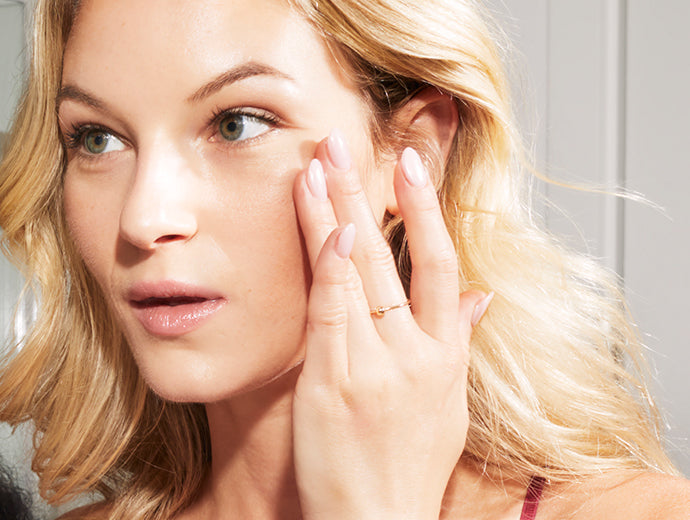
A healthy vs. unhealthy microbiome
For years, having bacteria on the skin was thought to be harmful, and so we used antibacterial washes and other harsh cleansers to strip it away. But, it turns out, all that aggressive sudsing meant we were removing thousands of skin-friendly microorganisms, weakening our barrier functions—and leaving our complexions more vulnerable to skin issues and chronic sensitivity. But that’s not all. Those years of “deep” cleaning also impacted the variety of flora on the skin—and diversity, it turns out, is key to microbiome homeostasis and optimal skin health.What happens when the microbiome is imbalanced
Without a healthy ratio of microorganisms, “bad” strains may be able to proliferate. For example, while there are many factors that contribute to the development of acne, the root cause is the overgrowth of a bacteria called C. acnes. During puberty, the skin starts to produce more sebum, and C. acnes bacteria flourishes in that oil. This is, of course, why so many teenagers battle acne breakouts. What’s curious, however, is that, in the last twenty years or so, the incidence of adult acne has been rising, plaguing skin well beyond puberty. It’s been theorized that one cause for this increase is the overuse of harsh acne treatments during the teen years. Sure, those benzoyl-peroxide-spike formulas kill C. acnes bacteria, but they may also kill lots of good flora, disrupting the microbiome balance, and setting the stage for chronic skin issues that doesn’t cease after puberty.Harsh acne products aren’t, however, the only culprits when it comes to causing an imbalance in the microbiome. Antibiotics taken orally, steamy showers, not spending enough time outside (that’s right; fresh air is key to sustaining balance), over-exfoliation, using dry shampoo day after day, and even double-cleansing have all been cited as possible causes of microbiome imbalance and triggers for conditions such as eczema, psoriasis, dandruff and rosacea.
How to get balanced again
For skin in distress that needs a rebalance asap, most experts say less is more when it comes to skincare. Streamlining your regimen to a few gentle, nourishing products will help prevent irritation and will keep you from inadvertently over-treating and exacerbating the imbalance.Using Neolastin’s Face & Neck Regenerative Serum, Rejuvenate and Hydrate Moisturizing Cream, and Revitalize & Firm Eye Cream takes the guesswork out of creating a microbiome-friendly skincare routine. The formulas are all nourishing and strengthening, and they support the skin’s barrier function. Following the three-step regimen also enables you to simplify your routine, support diversity in your skin’s micro-organism population—and score visible (e.g. smooth, plump, radiant) results.
.
